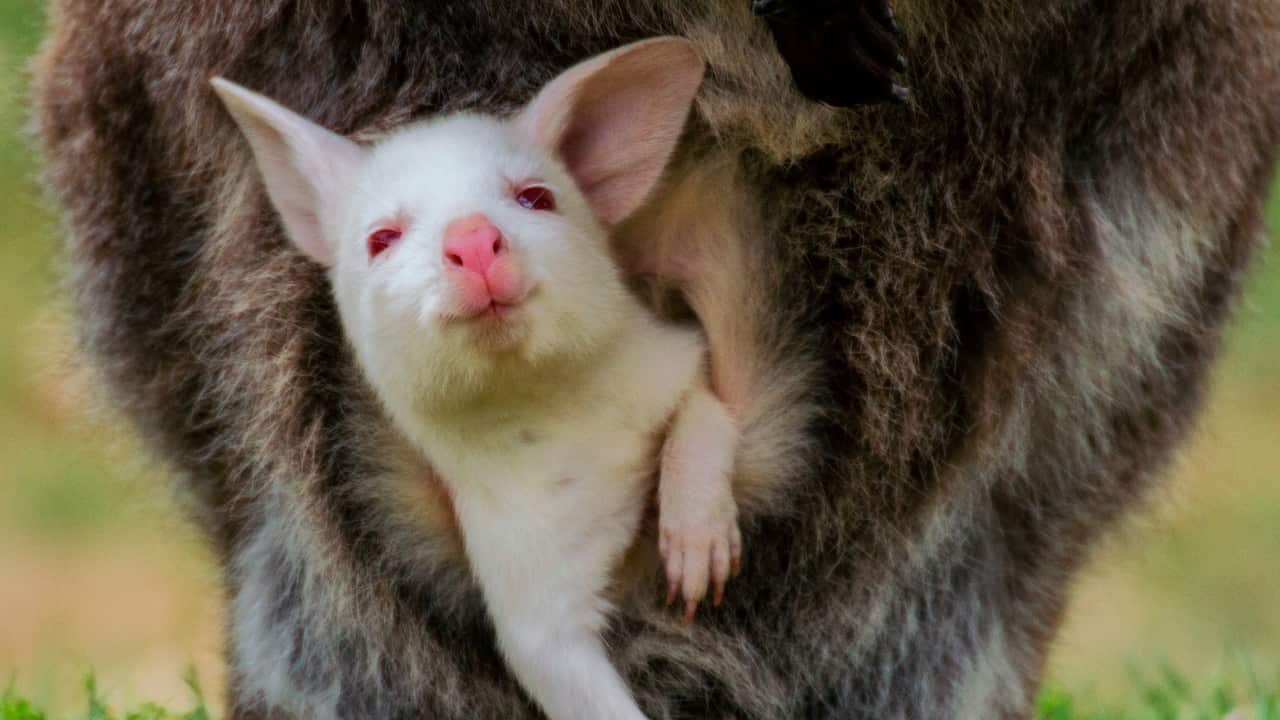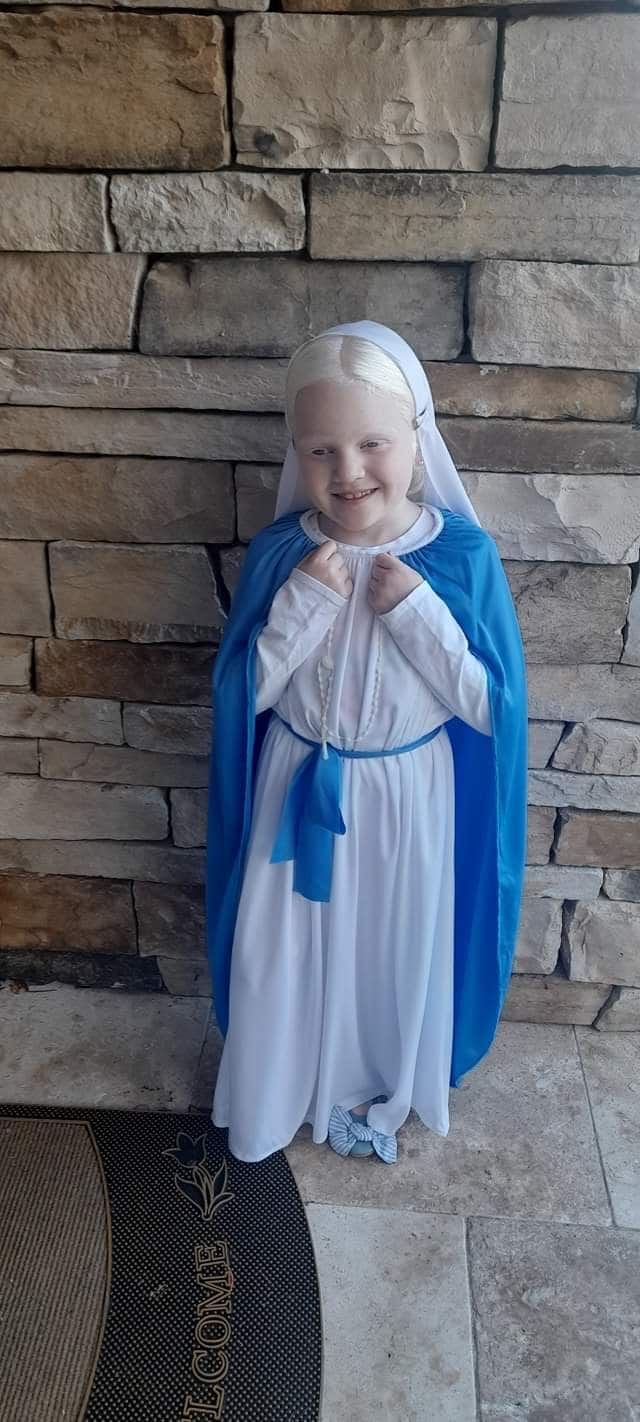Highlights
- Albinism is a rare, genetic order characterised by a lack of pigment
- People with albinism must be extra careful in the sun
- Albinism can result in impaired vision through to blindness
Mary Rose Succar is affected by a rare, genetic condition known as albinism characterised by a lack of or total absence of melanin, the substance responsible for pigmentation in the body most notably in the skin, hair and eyes.
It is estimated that one in 17,000 Australians has some degree of albinism which occurs across all ethnic groups and throughout the animal kingdom.
A common misconception about people with albinism is that they have pink or red eyes. In fact, their irises vary in colour from light grey or violet to the most common blue and in some cases, brown.
Unhelpful stereotypes
According to Elizabeth Beales, President of the , a national support group for people with albinism as well as their friends and family, other unhelpful misconceptions about albinism were mostly propagated by movie stereotypes.
"People with albinism can be depicted as anything from sharpshooters, the goofy sidekick or the purveyors of evil, even supernatural," she said, referencing the evil, religious fanatic character of "Silas" in the smash film "The Da Vinci Code" (2006).

The evil character of "Silas" from the 2006 film "The Da Vinci Code" is an unhelpful stereotype of albinism. Source: AAP Image/Mary Evans Picture Library
Vision problems stemming from albinism
She said melanin was also responsible for the development of visual pathways so people with albinism had some sort of reduced capacity to their vision.
"Low vision varies, some can drive, others have guide dogs or canes," Ms Beales said.

Elizabeth Beales, President of the Albinism Fellowship of Australia. Source: Albinism Fellowship of Australia
Incidence of albinism
"Around one in 70 people carry the recessive gene for albinism. If both parents have the gene, each child they have has a one in four chance of having the condition," Ms Beales said.
"Albinism therefore can appear to 'skip' a generation or two."
Dangers of sun exposure
Sun exposure, especially in the Australian climate, poses a grave risk not only to Mary Rose’s skin but also to her eyesight due to the reduced melanin levels.
Ms Beale said people with albinism needed to re-apply sunscreen at 10 to 20-minute intervals and skin cancers were also harder to spot because of the lack of melanin.
However, as we are also social people, we make the best of it and do go to the beach, hiking, swimming and play sports; we’re just more careful how we prepare.
Those with reduced or no melanin in their skin lack a barrier to protect them from potentially deadly UVA and UVB rays (those from the sun and glare) and need to wear a hat, sunglasses, long clothing covering all of their bodies and sunscreen every time they venture outside. According to the , the incidence of skin cancer in Australia is one of the highest in the world and two to three times that of the United States, Canada and the United Kingdom.
According to the , the incidence of skin cancer in Australia is one of the highest in the world and two to three times that of the United States, Canada and the United Kingdom.

Albinism occurs among animals too as can be seen with this wallaby joey. Source: Getty Images/Whitepointer
Every year in Australia, 80 per cent of all newly diagnosed cancers are skin cancers and the majority of those are directly caused by sun exposure. Mary Rose’s mother, Karen, said she had been unaware of albinism until her daughter was born and later diagnosed.
Mary Rose’s mother, Karen, said she had been unaware of albinism until her daughter was born and later diagnosed.

Mum Karen Succar and her daughter Mary Rose, who has albinism Source: Karen Succar
I was lost, and I started looking for answers and cases like my daughter, so I called another mother to share her experience with her daughter, who was in the same situation.
She said government support had been available to help her daughter day to day. For example, a guide dog helps Mary Rose travel to and from her school in Sydney's south.
“My daughter can only see things three metres away and loses the ability to see at all in the sun, so the government has provided her with many services,” Mrs Succar said.  “A lot of people stop me to look at my daughter and touch her, and she's sad about it, but I taught her to be happy with her excellence and differences.
“A lot of people stop me to look at my daughter and touch her, and she's sad about it, but I taught her to be happy with her excellence and differences.

Mary Rose Succar is just like every other kid in that she loves dressing up for school activities. Source: Karen Succar
“On the upside, her school administration and community have been very supportive such that Mary Rose has never experienced any form of bullying from other students.”
